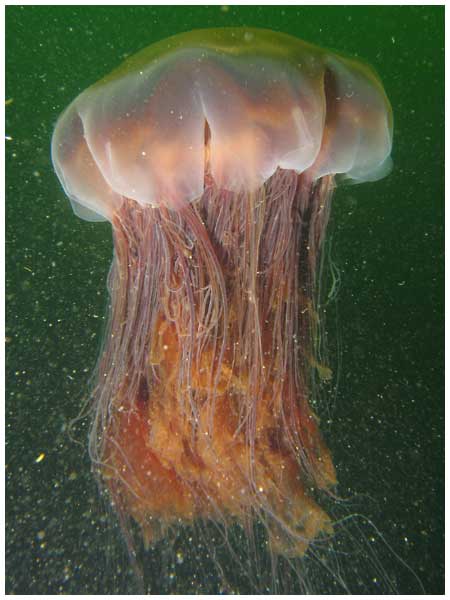 We have all stood before the jellyfish exhibit at an aquarium, marveling at the graceful movements of this wondrous sea creature. But appearances can be deceptive...
We have all stood before the jellyfish exhibit at an aquarium, marveling at the graceful movements of this wondrous sea creature. But appearances can be deceptive...
The Oskarshamn nuclear plant in Sweden, one of the largest in the world, was shut down -- no, not by a tsunami, but a jellyfish attack!
The pipes, that carry a constant flow of water to cool the reactors and turbines, had been clogged by tons of jellyfish. This is not the first time. The same nuclear power plant had been affected in 2005 and similar jellyfish infiltrations have happened in power plants around the world.
The Medusa Of The Sea

Jellyfish have existed on the face of our planet for over 650 million years. They were there before the time of dinosaurs. They have been the stories of Greek legends.
The word 'fish' is a misnomer since jellyfish are actually plankton -- that is, while they are capable of movement, they are helpless against ocean currents.
There are 4000 species of jellyfish living in sea waters and freshwaters around the world. They range in size from less than an inch to larger than 7 feet in size; the largest being the Lion’s Mane Jellyfish.
With a simple epidermis (skin) and a loose tangle of nerves defining their nervous system, jellyfish are the earliest known animals with cells organized functionally.
Nature has provided them with an adaptation to survive. Jellyfish tentacles are covered with thousands of cells called cnidoblasts which are equipped with tiny darts of poison that can paralyze their victims. Another defense tactic jellies use is bioluminescence or the ability to produce light. A bright blue or green flash of light could startle a predator!
Jellyfish Bloom
The explosion in the jellyfish population is believed to be due to several reasons. First, warming ocean temperatures. Since jellyfish are cold-blooded creatures, warm water temperatures suit them well and allow for quicker growth.
The other two reasons may have to do with predator and prey. An increase of nutrients in the ocean from fertilizer run-off (as water used for irrigating farms drains into water sources) is known to cause a growth of algae and zooplankton -- the jellyfish's food. The third, overfishing. As big fish and other sea creatures are decimated, jellyfish have no natural predators.
Is this worrisome? While some like to paint bleak pictures of the world's oceans taken over by jellyfish, such blooms are cyclical. One thing is for certain -- these creatures have an amazing ability to adapt to changing conditions. No wonder they have outlived the dinosaurs!







